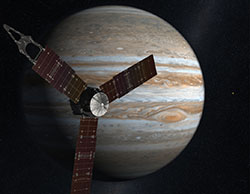[Steve] drives spacecraft for a living. As an engineer at the Jet Propulsion Laboratory, he’s guided probes to comets, asteroids, Mars, and Jupiter, figured out what happens when telemetry from these probes starts looking weird, and fills the role of the Space Hippy whenever NASA needs some unofficial PR.
Like most people who are impossibly cool, [Steve]’s career isn’t something he actively pursued since childhood. Rather, it’s something that fell in his lap. With qualifications like building a robotic computer to typewriter interface, a custom in-car navigation system in the late 80s, and a lot of work with an Amiga, we can see where [Steve] got his skills.
The earliest ‘hack’ [Steve] can remember was just that – an ugly, poorly welded sidecar for his bicycle made in his early teens. From there, he graduated to Lasertag landmines, Tesla coils, and building camera rigs, including a little bit of work on Octopussy, and a rig for a Miata. It helps when your dad is a cinematographer, it seems.
In college, [Steve] used his experience with 6502 assembler to create one of the first computerized lighting controllers (pre-DMX). After reading a biography on [Buzz Aldrin], [Steve] realized doing his thesis on orbital rendezvous would at least be interesting, if not an exceptionally good way to get the attention of NASA.
Around this time, [Steve] ran into an engineering firm that was developing, ‘something like Mathematica’ for the Apple II, and knowing 6502 assembly got him in the door. This company was also working to get the GPS constellation up and running, and [Steve]’s thesis on orbital mechanics eventually got him a job at JPL.
There’s several lifetimes worth of hacks and builds [Steve] went over at the end of his talk. The highlights include a C64 navigation system for a VW bug, a water drop high voltage machine, and a video editing system built from a few optical encoders. This experience with hacking and modding has served him well at work, too: when the star sensor for Deep Space 1 failed, [Steve] and his coworkers used the science camera as a stand in navigation aid.
One final note: Yes, I asked [Steve] if he played Kerbal Space Program. He’s heard of it, but hasn’t spent much time in it. He was impressed with it, though, and we’ll get a video of him flying around the Jool system eventually.












